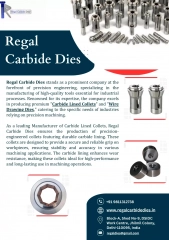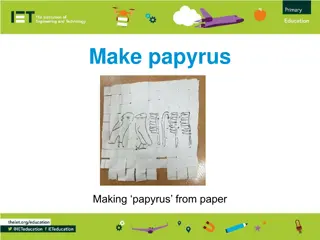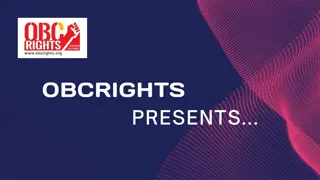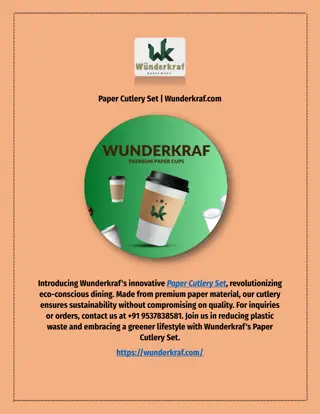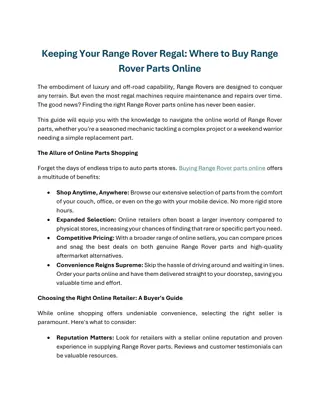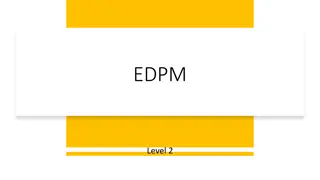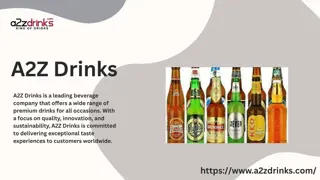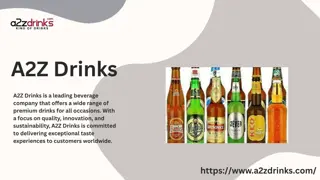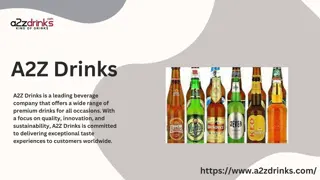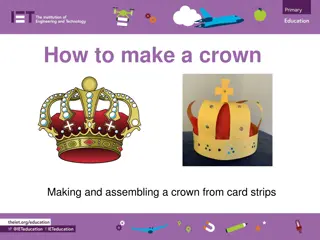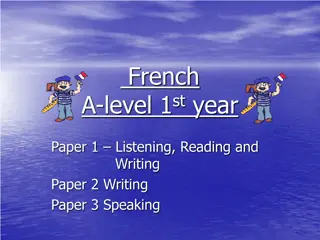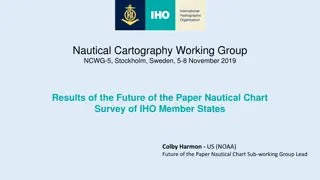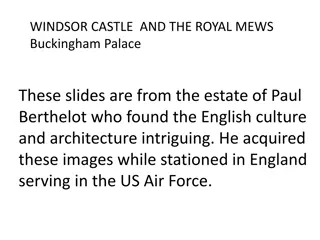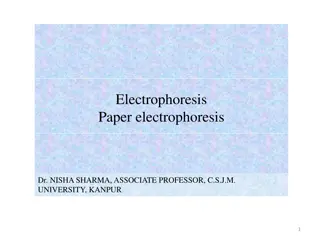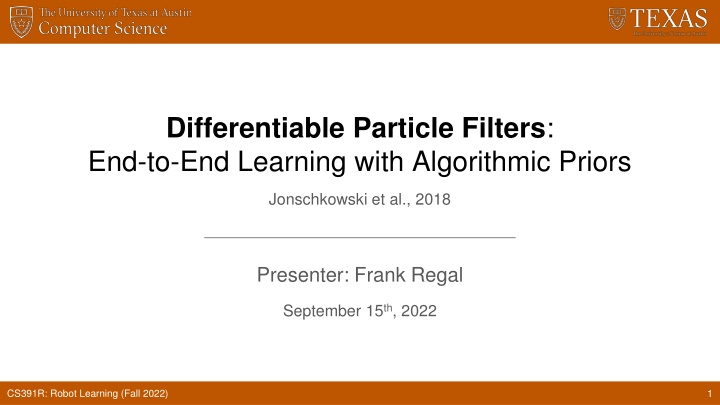
Learning Algorithmic Priors for Robot Localization
Explore the implementation of differentiable particle filters in robot learning for improved state estimation and localization. Dive into the challenges faced in noisy environments and discover how network architectures can enhance learning models for autonomous systems.
Uploaded on | 0 Views
Download Presentation

Please find below an Image/Link to download the presentation.
The content on the website is provided AS IS for your information and personal use only. It may not be sold, licensed, or shared on other websites without obtaining consent from the author. If you encounter any issues during the download, it is possible that the publisher has removed the file from their server.
You are allowed to download the files provided on this website for personal or commercial use, subject to the condition that they are used lawfully. All files are the property of their respective owners.
The content on the website is provided AS IS for your information and personal use only. It may not be sold, licensed, or shared on other websites without obtaining consent from the author.
E N D
Presentation Transcript
Differentiable Particle Filters: End-to-End Learning with Algorithmic Priors Jonschkowski et al., 2018 Presenter: Frank Regal September 15th, 2022 CS391R: Robot Learning (Fall 2022) 1
Motivation Robots need to know where they are Autonomous Driving Cars Robot assistants CS391R: Robot Learning (Fall 2022) 2
Motivation Hard Problem Similar looking doors Large open regions No closed-form solution Biswas, Joydeep. CS393R: Autonomous Robots Particle Filters for Mobile Robot Localization Lecture Slides . The University of Texas at Austin, 2021. CS391R: Robot Learning (Fall 2022) 3
Localization Problem Noisy Motions Odometry measurements (IMU s, encoders, physical models, etc.) Noisy Observations Sensor measurements (RGB, LiDAR, etc.) Motion Observation CS391R: Robot Learning (Fall 2022) 4
Standard Particle Filters Known Map w/ LiDAR Approximate the belief with particles Prediction Motion Model Measurement Update Observation Model Particle Proposal and Resampling Weighting and selection Biswas, Joydeep. CS393R: Autonomous Robots Particle Filters for Mobile Robot Localization Lecture Slides . The University of Texas at Austin, 2021. CS391R: Robot Learning (Fall 2022) 5
Problem Motion and Odometry models are always wrong Prediction Step ??? ?? = ? ???? 1,????? ?? 1??? 1 Measurement step ??? ?? = ?? ??????? ?? Gaussian Mixture Models are typically used (never correct) CS391R: Robot Learning (Fall 2022) 6
Research Question How can we use network architectures to learn these models and improve state estimation? Turn the algorithms into network architectures Make algorithms differentiable Make models learnable Enables end-to-end learning CS391R: Robot Learning (Fall 2022) 7
Related Work Algorithmic priors and end-to-end learning for planning and state estimation with histogram-based and Gaussian belief representations Tamar et al. Value Iteration Networks (differentiable planning algorithm) State estimation (and planning) with histograms Jonschowski and Brock - Introduce end-to-end learnable histogram filter State estimation with Gaussians Harnooja et al. - Present a differentiable Kalman filter with Gaussian belief and an end-to-end learnable measurement model from visual input. CS391R: Robot Learning (Fall 2022) 8
Proposed Approach Make robotic algorithms Differentiable Learnable Approach enables end-to-end learning while also encoding prior knowledge from algorithms Apply end-to-end learning with algorithmic priors for state estimation CS391R: Robot Learning (Fall 2022) 9
Method Differentiable particle filter (DPF) Learn the observation and motion models & Maximize the belief CS391R: Robot Learning (Fall 2022) 10
Method Belief ??? ?? = ??,?? ?: state of n particles in d-dimensional state space ?: weights of each state Prediction [?] ??: action sampler, creates noisy action ?? [?] ?: dynamics model which moves each particle ? according to ?? CS391R: Robot Learning (Fall 2022) 11
Method Measurement Update ?,??,??- feedforward networks ?: observation encoder, encodes ??into a vector ?? ??: particle proposer, generates new particles ??: observation likelihood estimator, weights each particle based on the observation CS391R: Robot Learning (Fall 2022) 12
Method Particle Proposal and Resampling 1000 particles for testing and 100 particles for training Supervised learning Individual Learning of the motion model Individual learning of the measurement model End-to-end learning CS391R: Robot Learning (Fall 2022) 13
Experiments Differentiable Particle Filters tested with Global localization 3D maze simulations (vision and odometry) Focus because of the simultaneous need for considering multiple hypotheses Main advantage of particle filter over Kalman filter Visual odometry DPFs applied to KITTI visual odometry tasks Track the pose of a driving car based on a FPV video CS391R: Robot Learning (Fall 2022) 14
Global Localization Results Algorithmic priors enable explainability End-to-end learning improves performance, but sequencing individual and end-to-end learning is even more powerful Algorithmic priors in DPFs improve performance compared to LSTMs reducing the error by ~80% Algorithmic priors lead to policy invariance CS391R: Robot Learning (Fall 2022) 15
Global Localization CS391R: Robot Learning (Fall 2022) 16
Visual Odometry Results DPF outperform backdrop Kalman Filters DPFs work on real data and can learn measurement models that work for visually diverse observations based on less than 40-minute videos CS391R: Robot Learning (Fall 2022) 17
Visual Odometry CS391R: Robot Learning (Fall 2022) 18
Extended Readings Probabilistic Robotics Textbook - Sebastian Thrun, Wolfram Burgard, and Dieter Fox. Probabilistic Robotics. MIT Press, 2005. Intro. to Differentiable End-to-end Learning - Aviv Tamar, Yi Wu, Garrett Thomas, Sergey Levine, and Pieter Abbeel. Value Iteration Networks. In Advances in Neural Information Processing Systems (NIPS), pages 2154 2162, 2016. Kalman Filter Variation - Tuomas Haarnoja, Anurag Ajay, Sergey Levine, and Pieter Abbeel. Backprop KF: Learning Discriminative Deterministic State Estimators. In Advances in Neural Information Processing Systems (NIPS), pages 43764384, 2016. CS391R: Robot Learning (Fall 2022) 19

